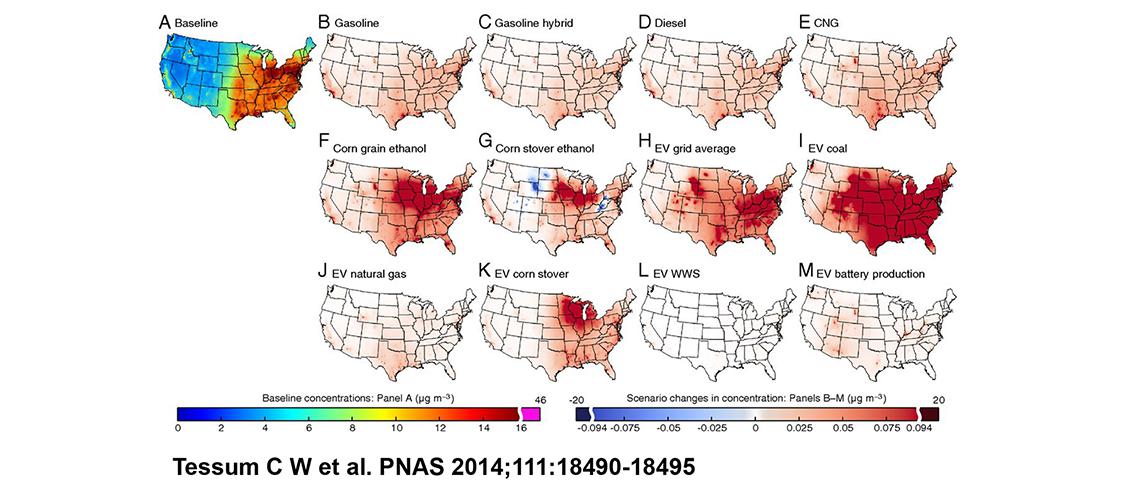
Concern about the level of greenhouse gases in the atmosphere and the resulting impacts on global climate has led many to look for alternative technologies. Since automobiles have become a major source of greenhouse gases, scientists and engineers have been working to develop cars that run on alternative fuels. There are a number of options, including using fuels other than gasoline in internal-combustion engines and using electric or hybrid-electric vehicles. However, whether a given alternative fuel actually has less impact than gasoline can be unclear.
Christopher Tessum, a graduate student in the research group of Associate Professor Julian Marshall (Fellow, Institute on the Environment; Civil, Environmental, and Geo- Engineering, College of Science and Engineering), is the lead author on a recent paper that uses computer modeling to investigate impact on air quality of several kinds of alternative fuels. The researchers are also able to predict the resulting health impacts from changes in air quality. Assistant Professor Jason Hill (Bioproducts and Biosystems Engineering, College of Science and Engineering and College of Food, Agricultural, and National Resource Sciences) and Professor Marshall are corresponding authors on the paper, which appeared in the Proceedings of the National Academy of Science of the United States of America in December 2014 (Tessum, Christopher W., Jason D. Hill, and Julian D. Marshall. 2014. Life cycle air quality impacts of conventional and alternative light-duty transportation in the United States. Proceedings of the National Academy of Sciences of the United States of America 111(52) (DEC 30), 10.1073/pnas.1406853111.). The simulations estimated two pollutants, fine particulate matter and ground-level ozone, and used population and epidemiological data to estimate mortality from various scenarios.
One of the features of this paper is that it not only studies the impact of emissions from the vehicles themselves, but it includes data about emissions from the source of the fuel - for example, the emissions from coal burned at the electric power plant that provided the electricity for a hybrid vehicle. The researchers found that electric vehicles that are powered by electricity generated from natural gas or wind, water, or solar power are best for air quality. Videos that describe the research and show the simulations of particulate matter and ozone are available on the Marshall group’s website.
Articles about this paper have appeared in various media outlets:
- AP
- Popular Mechanics
- The Economist
- Pioneer Press (St. Paul, Minnesota)
- University of Minnesota Discover blog
The Marshall research group at MSI has numerous publications concerning their research into the health effects of air quality issues. A previous Research Spotlight (Air Pollution and Socioeconomic Status, September 17, 2014) featured a paper that appeared in PLoS One in April 2014.
Image description: Annual average particulate matter concentrations. (A) Year 2005 baseline modeled concentrations. (B-L) Increase in concentration above the baseline attributable to replacement of 10% of year 2020 vehicle use with the given technology. (M) Increase in concentration attributable to EV battery manufacturing. Color scales contain a discontinuity at the 99th percentile of emissions. Abbreviations: CNG, compressed natural gas vehicle; EV, electric vehicle; WWS, wind, water, or solar. Image and description, Tessum CW et al., PNAS 2014;111:18490018495. ©National Academy of Sciences of the United States of America.
posted on February 4, 2015